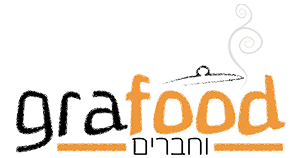Self-Report Assessment of Hearing Aid Outcome - An Overview Science Direct. It . An attitude is implicit if you. In the meantime, policymakers should resist proposals to incorporate survey-based measures of non-cognitive skills into high-stakes accountability systems. Interviews can direct the participant to give responses that they may otherwise struggle to articulate. When conducting an interview, there should always be a standardised process to avoid. Finally, self-report measures produce ordinal data, which may tell you the order units are ranked in but lacks the ability to tell you the differences between the units. The Social Problem-Solving Inventory-Revised (SPSI-RTM) is a self-report measure of social problem-solving strengths and weaknesses in individuals 13 years old and older. Researchers may get more qualitative information from them than they would from questionnaires. Role of a Self-report Measure in Athlete Preparation The Brown Center Chalkboard Series Archive. The pros and cons of collecting data through self-report questionnaires How Self-Report Inventories Are Used in Psychology - Verywell Mind Like achievement tests, questionnaires have the advantage of quick, cheap, and easy administration. In conclusion, I outline three directions for future research. Similarly, Will Dobbie and Roland Fryer find that attending the Harlem Promise Academy reduced student-reported grit, despite having positive effects on test scores and college enrollment, and negative effects on teenage pregnancy (for females) and incarceration (for males). Create beautiful notes faster than ever before. People tend to be less aware of the their _________________ attitudes, which are more likely to influence their behaviors when they are not monitoring. Understanding Psychological Measurement - Research Methods in In addition, the differences in test-score gains between bottom- and top-quartile students on each non-cognitive skill amount to almost a full years worth of learning in math over the middle school years. One issue of using a self-report questionnaire is response biases. Which is not a type of self-report measure? Another issue is the honesty of the response. Sign up to highlight and take notes. One of the valid self-report measures is the Self-Harm Inventory (SHI) ; it is the first and widely used measure for assessing self-harm behaviors. Note: * indicates that the difference between bottom- and top-quartile students is statistically significant at the 95 percent confidence level. Impression management theory suggests that people change their attitudes to match their behaviors in an effort to: The process by which attitudes are changed is called: The process by which a person is persuaded by cues in the persuasion context rather than thinking critically about the content of a persuasive message is called: The Supreme Court takes up student loan forgiveness Whats at stake? Semantic differential scales give participants a scale on which they can fill the boxes that correspond to their preferences or level of agreement. Journal of Personality. Get the help you need from a therapist near youa FREE service from Psychology Today. What is the difference between an open and closed question? An unpleasant psychological state often aroused when people hold two conflicting cognitions is called: Perhaps one's self-reported habits measure idealized perceptions of oneself rather than one's actual tendencies (e.g., Brown-Iannuzzi et al., 2019). American Psychiatric Association. Retrieved January 12, 2021, from. Despite the pivotal role of inhibition for trait self-control, a growing body of evidence found small-to-zero correlations between self-report measures of trait self-control and behavioral inhibition tasks. A limitation of self-report measures is that participants may not be honest in their responses. Consider the multiple linear regression model, y=0+y=\beta_0+y=0+ 1x1+2x2+3x3+\beta_1 x_1+\beta_2 x_2+\beta_3 x_3+\varepsilon1x1+2x2+3x3+. Why are questionnaires superior to interviews in terms of quantitative analysis? How does the There are self-reporting measures for overall mental health and for specific conditions. The point is just that if you need to assess someone's reasoning, then you might want to triangulate with both self-report and behavioral measuresespecially if you are evaluating your own reasoning ability. The questionnaires used in research should be checked to see if they produce consistent results over time. We compared 23 participants' actual smartphone use over a two-week period with self . Easily one of the most popular and convenient methods of data collection in psychology testing is a self-report questionnaire. Overall, self-report measures are quick, easy to use, inexpensive, and can be completed at home at your own discretion, which may promote more truthful responses.8, Despite the easy and inexpensive nature of self-report tools, some mental health professionals and researchers feel there are many disadvantages to excessive reliance on self-reporting measures. D. forewarning. These measures rely on the clients responses and provide mental health professionals with greater insight into the respondents symptoms, internal experiences, and/or behaviors. Academic and disciplinary climates as perceived by students, by school type. The Cognitive Flexibility Scale (CFS) (Martin & Rubin, 1995) is a 12-item measure capturing three elements of self-report CF: the awareness of options to be flexible; willingness to be flexible; and self-efficacy in being flexible. What is self-report? c. Multiple-choice questions should have answer choices that are (select all that apply) a. ambiguous. The non-cognitive skills we measured include conscientiousness, self-control, and grit a term coined by our collaborator Angela Duckworth to capture students tendency to sustain interest in, and effort toward, long-term goals. It is also an important way that clinicians diagnose their patientsby asking questions. However, despite these problems, it is my belief that self-report tests will become increasingly more popular due to their overall convenience. Figures 1a, 1b, and 1c compare the average number of absences, the share of students who were suspended, and the average test-score gains between fourth and eighth grade of students who ranked in the bottom- and top-quartile on each skill. Semantic differential scales measure participants attitudes in questionnaires and surveys. Different approaches may be needed when approaching certain subjects or certain types of participants. Nie wieder prokastinieren mit unseren Lernerinnerungen. In which type of interview does the interviewer have the most control? One potential problem with self-report measure is that. Let us look at the strengths and weaknesses of the questionnaires. technological advance affect the welfare of U.S. (2014). Its 100% free. To understand people's reasoning ability, both self-reports and behavioral measures are needed. The athlete needs to take ownership of the data being recorded to help produce the necessary data on which a coach and athlete can act. To address this crucial element of research, the National Institutes of Health (NIH) held an informative conference here in . Alternatives to self-reports: Conditional reasoning problems and IAT This method's casual nature allows the interviewer to take control and conduct the interview as they see fit, including changing their strategy or the subject in response to new information; this improves validity. Unstructured interviews are challenging to analyse reliably sometimes, as responses can vary dramatically, so attaining consistent responses across multiple interviews is difficult. Sharing insights about psychological tests and measurement. People may not remember their experiences of pain accurately. In research settings, a 0-100 visual analog scale is the most common measure of pain intensity. (2021) had people score themselves on how. Likert scales, ranked scales, semantic differential scales and multiple-choice questionnaires are all used. while an example of a closed question would be, 'Tick all boxes that apply'. The average differences between the charter and district students in conscientiousness and grit, although statistically insignificant, run in the same counter-intuitive direction. I've been studying philosophy for over a decade and philosophers tend to be reflective (Livengood et al., 2010). Have all your study materials in one place. This site is using cookies under cookie policy . Journal of Personality and Social Psychology, 77(6), 11211134. Multiple choice questions have various pre-selected answers to choose from; this allows researchers to gather quantitative data easily. Semi-structured interviews require the interviewer to find the perfect balance between the structured and unstructured styles of interviews, so the interviewer must be experienced. C. respondents might not respond truthfully. Ranked/rating scales are questions that ask you to fill out, for example, boxes from one to ten indicating satisfaction with a product. Figure 3 confirms that the academic and disciplinary climates of the charter schools in our sample, as perceived by their students, do in fact differ from those of the open-enrollment district schools. Additionally, some populations, such as children, adolescents, and those with developmental disabilities, may have a hard time truly understanding the scope of a question to know how they should answer.9, Researchers have also questioned the validity of self-reporting tools. Data used in scientific research take on many different forms and are collected in multiple ways. Philosophical temperament. Arch Gen Psychiatry. Also, I've been doing cognitive science for nearly a decade and cognitive scientists are probably familiar with the evidence suggesting that we should question our gut in at least some circumstances (e.g., Scherer et al., 2017; Tversky & Kahneman, 1983). Howard, Ralph, Gulanick, Maxwell, Nance, and Gerber (in press) describe a potential confounding effect present in research designs which use self-report instruments. Self-report is the primary means of measuring pain. strongweak, goodbad). [1] To measure math test-score gains, we regressed 8th-grade test scores on a cubic polynomial of 4th-grade scores in both math and English language arts and used the residuals from this regression as a measure of students performance relative to expectations based on their achievement before entering middle school. Which of these is not one of those factors? (2013). Stop procrastinating with our smart planner features. Which type of self-report technique are they more likely to use? Self-report methods such as questionnaires are open to social desirability bias. https://doi.org/10.1037/bul0000218. I also believe that researchers will find a way to circumvent these issues in the future. Measures of salience have typically asked respondents to report on likely behavior in hypothetical situations (Brenner et al. Self-report data is gathered typically in paper-and-pencil or electronic format or sometimes through an interview. Hence, they are useful tools for detecting early cognitive impairment at least in older adults. For each self-report technique, we will look at the advantages and disadvantages of these. One potential problem with self-report measures is that a. they do not provide information concerning the intensity of an attitude. Self-reporting is commonly used in psychological studies because it can . It can be performed relatively quickly, so a researcher can obtain results in days or weeks rather than observing a population over the course of a longer time frame. Social desirability bias refers to the tendency that participants have in which they often answer in a way to portray themselves in a good light, this means that they report what they think the researcher wants to hear and they make themselves appear better than what they actually are. Beck Depression Inventory (BDI) measures failure, guilt, social withdrawal, indecisiveness, insomnia, suicidal ideas, self-dissatisfaction, and more. In this blog, I will explain to you the benefits of using such . Deighton, J., Croudace, T., Fonagy, P., Brown, J., Patalay, P., & Wolpert, M. (2014). This parallel evidence from research in similar settings confirms that reference bias stemming from differences in school climate is the most likely explanation for these paradoxical findings. on one method of measurement, substantive findings are likely to be contaminated by shared method variance. The MBTI is a popular personality measure that describes personality types in four categories: introversion or extraversion, sensing or intuiting, thinking or feeling, and judging or perceiving. Will you pass the quiz? Individuals may opt to be less honest, refrain from providing some details, interpret wording differently, inaccurately assess themselves, or exaggerate and falsify their responses. Self-report methods are pretty inexpensive and don't require much time or effort. A weakness of the Likert scale is that some people may have no opinion on a statement, and it can be difficult for researchers to interpret this information. Students attending charter schools also report substantially lower levels of negative peer effects and modestly lower levels of student input in their schools. (2021). A self-report measure is a type of survey, questionnaire or poll in which respondents read the question and select a response by themselves without interference from an interviewer or another person. Understandably, popular interest in measuring and developing students non-cognitive skills has surged. There are many types of closed questions. True or false? Is the cognitive reflection test a measure of both reflection and intuition? 2. Hence, they rush through the rest and automatically check the chosen response off, reducing the study's validity. d. The use of self-report measures is . The alternative and, in my view, more plausible hypothesis is that the measures are misleading due to reference bias stemming from differences in school climate between district and charter schools. https://doi.org/10.1038/s41562-021-01117-5, Pennycook, G., Cheyne, J. Psychological Review, 90(4), 293315. Saniqua plans to use a self report measure in which people indicate their agreement or disagreement with a list of statements. There is little agreement on which skills are most important, their stability within the same individual in different contexts, and, perhaps most fundamentally, how they can be reliably measured. Building rapport may help alleviate this issue, but it may not solve it. Retrieved January 12, 2021, from, Self-Report Measures, Screenings and Assessments. Now suppose the United States has a quota on This would make sense. Self-report scales involve the researcher both asking direct questions to a person and completing the questions themselves. B. similarity and physical attractiveness. The problems with self-report measures are as follows: Mono-method bias: If the same person prepares the pre-evaluation and post-evaluation reports at the same time, then both the reports would be questionable. Semantic differential scales measure attitudes indirectly by measuring how you feel about the concept on a continuum between two opposite adjectives (e.g. . Psychiatry and Behavioral Health Learning Network. People are often biased when they report on their own experiences. Connotative meaning refers to feelings and ideas you associate with a concept. c. respondents might not respond truthfully. The Limitations of Self-Report Measures of Non-cognitive Skills - Brookings Self-Report - an overview - ScienceDirect Topics https://doi.org/10.1257/089533005775196732, Grtner, A., Grass, J., Wolff, M., Goschke, T., Strobel, A., & Strobel, A. Procrastination is a chronic and widespread problem; however, emerging work raises questions regarding the strength of the relationship between self-reported procrastination and behavioral measures of task engagement. Understanding Self-Report Bias in Organizational Behavior Research In clinical settings, pain is assessed on a 0-10 numerical ratings scale, with 0 indicating no pain and 10 indicating the worst pain imaginable. Possibly more troublesome is reference bias, which occurs when survey responses are influenced by differing standards of comparison. D. less likely an audience member is to use to peripheral route to persuasion. Behavioural measures are those in which some other aspect of participants' behaviour is observed and recorded. Psychology Tools. This method of data collection is the very widely used. 1. If some individuals respond more to social pressure than others, however, their placement within the overall distribution of responses could change. bipolar disorder. c, d. Select the types of scales that are most appropriate when a researcher wishes to measure a participant's attitude. The HAUQ uses a 4-point scoring score for each of the 11 questions. Borders, A. Nature Human Behaviour. This report looks in detail at Athlete Self Reporting Measures (ASRM). https://doi.org/10.1037/0033-295X.90.4.293, Zell, E., Strickhouser, J. E., Sedikides, C., & Alicke, M. D. (2020). A systematic review and meta-analysis of discrepancies between logged and self-reported digital media use. Federii, A., Summerfeldt, L. J., Harrington, R. E., McCabe, R. E., Purdon, C. L., Rowa, K., & Antony, M. M. (2010). Self-reports can be qualitative or quantitative, depending n the method used. Knowing what you value will help you build the most meaningful life possible. Structured interviews are the most reliable type of interview because they follow a rigid set of questions that every respondent is asked. Self-reporting can be a useful tool for collecting data. In a policy oriented editorial, a former editor of the Journal of Ap plied Psychology stated that the sole use of self-report . Items including 'I have many possible ways of behaving in any given situation' are rated on a 6-point Likert . Reliability vs validity: Whats the difference? Self-report measures give information to check the effectiveness of the HRD programs: The problems with self-report measures are as follows: Mono-method bias: If the same person prepares the pre-evaluation and post-evaluation reports at the same time, then both the reports would be . In order to illustrate how crime rates can be underestimated by traditional crime reports, the NCVS indicated that from 2006 to 2010, more than half of all . This paradox is most vivid when comparing students who attend no excuses charter schools and those who attend open-enrollment district schools. The Emotion Regulation Questionnaire (ERQ) is a 10-item self-report scale designed to assess habitual use of two commonly used strategies to alter emotion: cognitive reappraisal and expressive suppression. The most common method is self-report, in which people respond to questions about themselves regarding a wide variety of issues such as personality traits, moods, thoughts, attitudes, preferences, and behaviors. B. it is not possible to assess the validity of self-report measures. Mirja Peret and Petra Rekat (2020) had high school students and professionals (a) report their agreement with sentences like the ones above (a.k.a., the "Need for, Grtner et al (2021) had people complete the NFC items as well various measures of cognitive control, working, Newman and colleagues (2020, Experiment 3) found that people who scored themselves higher in "need for cognition" were, Coutinho et al. C. the inoculation hypothesis. depression.



